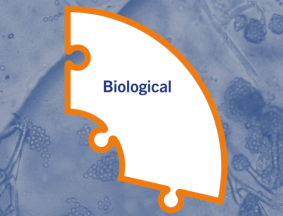Healthy soil is resilient soil. Healthy soils can better cope with various stresses, such as drought, floods, extreme temperatures, pests, diseases, and land-use changes. Balanced soil life is, therefore, the basis of resilient soil, and of sustainable agriculture and natural systems. Soil Life Monitor is used by farmers, advisers and research institutes because it provides information on the microbial life in the soil by mapping the microorganisms, a.k.a. microscopic miracle workers, present.
Bacteria and fungi break down organic matter, and in the process, nutrients are mineralized. These nutrients can be taken up by the plants. High microbial activity is therefore beneficial to plants. A rich microbial ecosystem has less room for pathogens to grow because of competition. Microbial life flourishes at high amounts of organic matter. Organic matter stores carbon, coming from CO2 in the atmosphere, and increases the water-holding capacity of the soil.
The test results of Soil Life Monitor can be used for benchmarking and comparison between different management styles. Soil Life Monitor can help you to answer many questions, such as whether the addition of compost positively affects the microbial biomass and what the effect of no-tillage has on the fungal community in your soil. Depending on your concern, you can decide how often you want to measure the microbial life. Using the results, you can work in a targeted way to improve soil health towards a resilient soil.
| PARAMETERS |
|---|
|
Carbon in microbial/bacterial/fungal biomass |
More information
| Name | Date | File |
|---|---|---|
| Brochure Soil Life Monitor | 12-09-2022 | |
| Example report Soil Life Monitor | 09-05-2023 | |
| Sampling protocol soil | 03-11-2023 | |
| Fact Sheet Soil Life Monitor | 29-03-2024 |
Analysis
PLFA
Soil Life Monitor is based on Phospholipid Fatty Acids (PLFA) analysis. PLFAs make up the cell membranes of bacteria and fungi. They degenerate quickly, therefore by analyzing them, we measure only the living organisms present in the soil.
The wet chemistry method we use is GC-MS (Gas chromatography-mass spectrometry), which can determine 120 different PLFAs. PLFAs are specific to different groups of bacteria and fungi, so through this analysis, we can determine the defined groups that are present (bacteria, fungi and protozoa) and their relative quantities.
NIR
Eurofins Agro also measures PLFAs using near-infrared spectroscopy (NIRS), a quick, innovative, and reliable method. NIRS analysis uses PLFA GC-MS as the wet chemistry reference method. By analyzing many samples with both wet chemistry and with NIRS, the NIRS analysis is calibrated to provide an optimized measurement of PLFAs in the soil sample.

